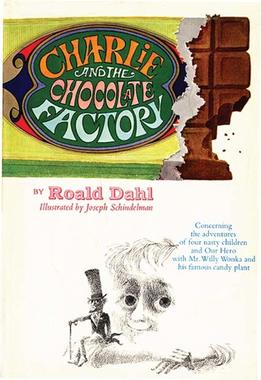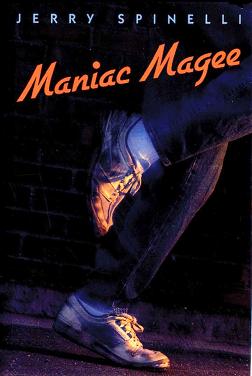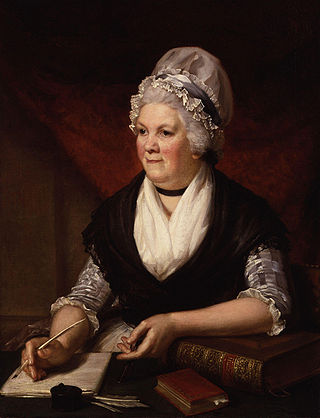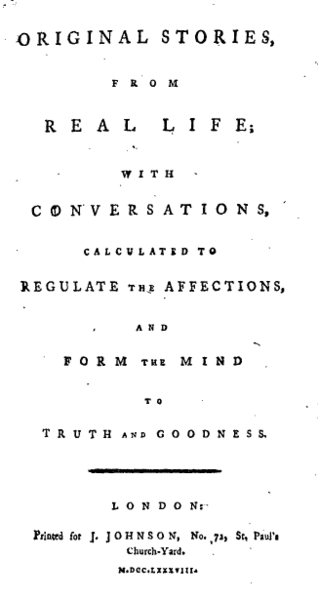Related Research Articles

Harry Potter and the Philosopher's Stone is a fantasy novel written by British author J. K. Rowling. The first novel in the Harry Potter series and Rowling's debut novel, it follows Harry Potter, a young wizard who discovers his magical heritage on his eleventh birthday, when he receives a letter of acceptance to Hogwarts School of Witchcraft and Wizardry. Harry makes close friends and a few enemies during his first year at the school and with the help of his friends, Ron Weasley and Hermione Granger, he faces an attempted comeback by the dark wizard Lord Voldemort, who killed Harry's parents, but failed to kill Harry when he was just 15 months old.

Charlie and the Chocolate Factory is a 1964 children's novel by British author Roald Dahl. The story features the adventures of young Charlie Bucket inside the chocolate factory of eccentric chocolatier Willy Wonka.
Elaine Lobl Konigsburg was an American writer and illustrator of children's books and young adult fiction. She is one of six writers to win two Newbery Medals, the venerable American Library Association award for the year's "most distinguished contribution to American children's literature."

Cassia Joy Cowley is a New Zealand author best known for her children's fiction, including the popular series of books Mrs. Wishy-Washy.
Basal readers are textbooks used to teach reading and associated skills to schoolchildren. Commonly called "reading books" or "readers" they are usually published as anthologies that combine previously published short stories, excerpts of longer narratives, and original works. A standard basal series comes with individual identical books for students, a Teacher's Edition of the book, and a collection of workbooks, assessments, and activities.

From the Mixed-Up Files of Mrs. Basil E. Frankweiler is a novel by E. L. Konigsburg. The book follows siblings Claudia and Jamie Kincaid as they run away from home to the Metropolitan Museum of Art in New York City. It was published by Atheneum in 1967, the second book published from two manuscripts the new writer had submitted to editor Jean E. Karl.
Joy Hakim is an American author who has written a ten-volume history of the United States, A History of US, and Freedom: A History of US, all published by Oxford University Press. Hakim is also the author of The Story of Science, three volumes co-published by Smithsonian Books and the National Science Teachers Association.

Maniac Magee is a novel written by American author Jerry Spinelli and published in 1990. Exploring themes of racism and inequality, it follows the story of an orphan boy looking for a home in the fictional town of Two Mills. Two Mills is harshly segregated between the East and West, blacks and whites. He becomes a local legend for feats of athleticism and helpfulness, and his ignorance of sharp racial boundaries in the town. It is popular in middle school curricula, and has been used in social studies on the premises of reaction to racial identity and reading. A TV movie was released on February 23, 2003.

Sarah Trimmer was a writer and critic of 18th-century British children's literature, as well as an educational reformer. Her periodical, The Guardian of Education, helped to define the emerging genre by seriously reviewing children's literature for the first time; it also provided the first history of children's literature, establishing a canon of the early landmarks of the genre that scholars still use today. Trimmer's most popular children's book, Fabulous Histories, inspired numerous children's animal stories and remained in print for over a century.

Original Stories from Real Life; with Conversations Calculated to Regulate the Affections, and Form the Mind to Truth and Goodness is the only complete work of children's literature by the 18th-century English feminist author Mary Wollstonecraft. Original Stories begins with a frame story that sketches out the education of two young girls by their maternal teacher Mrs. Mason, followed by a series of didactic tales. The book was first published by Joseph Johnson in 1788; a second, illustrated edition, with engravings by William Blake, was released in 1791 and remained in print for around a quarter of a century.

The Turbulent Term of Tyke Tiler is a children's school adventure novel by Gene Kemp, first published by Faber and Faber in 1977 with illustrations by Carolyn Dinan. It is set at Cricklepit Combined School, a fictional primary school based on St Sidwell's School in Exeter where Kemp worked as a teacher from 1963 to 1979. The book inaugurated a series of further stories by Kemp set at the same school. Tyke Tiler follows the final term of Tyke, an adventurous twelve-year-old, at Cricklepit Combined School. After Tyke's best friend Danny gets into various scrapes, Tyke has to protect and stick up for him despite Danny being misunderstood by teachers and other students.
John Pickard is an English actor, best known for playing David Porter in the BBC sitcom 2point4 Children, and Dominic Reilly in Channel 4's Hollyoaks.
Elizabeth Anne Fuller is the illustrator of many New Zealand children's books; including Mrs. Wishy-Washy, My Brown Bear Barney, Best-Loved Bear. She was born in Hastings, New Zealand, daughter to Geoffrey and Margaret Fuller. Elizabeth went to primary and secondary schools in Hawke's Bay before attending Wellington School of Design. Before becoming a freelance illustrator Elizabeth worked as a Designer in the Graphics Department, Television New Zealand; Designer, Illustrator in Creative Department, Illotts Advertising, Wellington.

Lessons for Children is a series of four age-adapted reading primers written by the prominent 18th-century British poet and essayist Anna Laetitia Barbauld. Published in 1778 and 1779, the books initiated a revolution in children's literature in the Anglo-American world. For the first time, the needs of the child reader were seriously considered: the typographically simple texts progress in difficulty as the child learns. In perhaps the first demonstration of experiential pedagogy in Anglo-American children's literature, Barbauld's books use a conversational style, which depicts a mother and her son discussing the natural world. Based on the educational theories of John Locke, Barbauld's books emphasise learning through the senses.
Scottish Book Trust is a national charity based in Edinburgh, Scotland promoting literature, reading and writing in Scotland. Scottish Book Trust works with and for a range of audiences, including babies and parents, children and young people, teachers and learning professionals, and writers and publishers.
Wishy-washy or Wishy Washy may refer to:

Harry the Dirty Dog is an American children's picture book written by Gene Zion and illustrated by Margaret Bloy Graham. Originally published in black and white in 1956 by Harper and Row, it was reprinted in 2002 with splashes of color added by the original artist. Based on a 2007 online poll, the National Education Association listed the book as one of its "Teachers' Top 100 Books for Children." The story also spawned an animated short, which was released in 1997.

Don't Forget the Bacon! is a children's book written and illustrated by Pat Hutchins. It was published by Bodley Head in 1976. The story is about a little boy who tries to memorise a list of groceries his mother has asked him to buy. The book has been used as a teaching tool to instruct children about early learning concepts.

Gavin John Bishop is an author and illustrator, from Invercargill, New Zealand. He is known for illustrating books from prominent New Zealand authors, including Joy Cowley and Margaret Mahy. Bishop's first published picture book was Mrs McGinty and the Bizarre Plant, published in 1981 by Oxford University Press.

Robyn Belton is an illustrator of children's books. Her work, often focusing on themes of war and peace, has won many prizes, including the New Zealand Post Children's Book Awards 1997 Picture Book Winner and Book of the Year, and the Russell Clark Award in 1985 and 2009. She herself has been recognised with the prestigious Storylines Margaret Mahy Award and the inaugural Ignition Children's Book Festival Award. She lives in Otago, New Zealand.
References
- ↑ Dudding, Adam (1 October 2010). "She's hooked on storytelling". Stuff.co.nz. Archived from the original on 13 January 2024. Retrieved 14 February 2012.
- ↑ "The McGraw-Hill Companies To Acquire Tribune Education; Acquisition Strengthens McGraw-Hill Education's Leadership Position". The McGraw-Hill Companies. 26 June 2000. Archived from the original on 17 July 2012. Retrieved 14 February 2012.
- ↑ "Joy Cowley Collection". Hameray Publishing. Retrieved 14 February 2012.
- ↑ "Early Education Expert Shares Love of Reading with Preschoolers". Nieer.org. 14 December 2006. Archived from the original on 14 October 2011. Retrieved 14 February 2012.
- ↑ "Best Books to Read with Your Toddler". Education.com. Retrieved 14 February 2012.
- ↑ "Teaching Mrs. Wishy Washy: Story Elements and Lesson Plans". Brighthub.com. 26 October 2011. Retrieved 14 February 2012.
- ↑ "Story Elements with Mrs.Wishy Washy | Resources | TeacherShare". Teachershare.scholastic.com. Archived from the original on 17 July 2012. Retrieved 14 February 2012.
- ↑ "Learning High Frequency Words From Mrs. Wishy Washy Is a Great Idea and Great Fun!". Brighthubeducation.com. Retrieved 14 February 2012.
- ↑ "Lesson Plans: Shared Reading: Mrs. Wishy Washy (Elementary, Reading/Writing)". Teachers.net. 9 October 2007. Retrieved 14 February 2012.
- ↑ "Pre-K students make acting debuts | Mahomet Citizen". Mcitizen.com. 22 November 2011. Retrieved 14 February 2012.